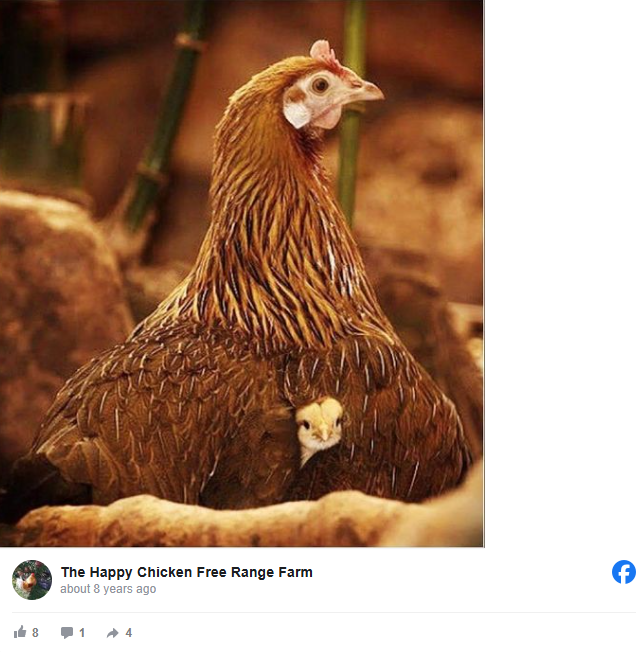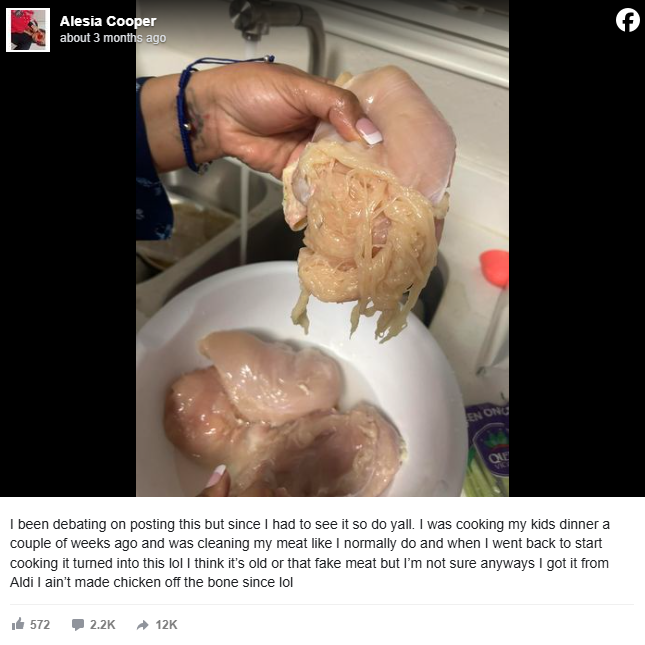A mother from Irving, Texas, named Alesia Cooper shared a picture of a disturbing chicken breast on March 21. “I’ve been debating whether to post this, but since I had to see it, so do y’all,” she said, revealing an image of the chicken breast that had started to shred into strands.

“I was cooking dinner for my kids a couple of weeks ago and was cleaning the meat like I normally do. When I went back to start cooking, it turned into this,” Cooper explained.

Cooper mentioned that the chicken breast was purchased from the budget supermarket Aldi, adding, “Lol, I think it’s fake meat, but I’m not sure. Anyway, I haven’t made chicken off the bone since.”
The picture garnered numerous comments, ranging from criticism to conspiracy theories.
One commenter suggested, “That’s lab-grown chicken. It’s a new method because of the recent bird flu and resource shortages. Last year, they announced a way to make chicken in a lab, and that’s what’s in stores now.”
Another commenter claimed, “Fake. I don’t buy it anymore.”
A third person argued, “It’s not lab-grown or 3D-printed meat. It comes from real chickens. The issue is greedy chicken producers who use growth hormones to make chickens grow too fast.”
According to the Wall Street Journal, the phenomenon known as “woody breast” or “spaghetti meat” results from chicken breeders trying to increase breast size by giving chickens growth chemicals. “There is proof that these abnormalities are associated with fast-growing birds,” said Dr. Massimiliano Petracci, an agriculture and food science professor at the University of Bologna in Italy.
In 2023, chickens typically took 47 days to reach an average market weight of 5.03 pounds. In contrast, back in 1925, it took 112 days for a chicken to reach a market weight of 2.5 pounds.
Dr. Michael Lilburn, a professor at Ohio State University’s Poultry Research Center, noted, “If people keep eating more and more chicken, chickens will probably have to get even bigger. We’ll have to increase the proportion of breast meat in each bird, too.”

Lilburn further commented, “What people don’t realize is that it’s consumer demand forcing the industry to adjust. The majority of the U.S. population still doesn’t care where their food comes from, as long as it’s cheap.”
What do you think? Let us know.









